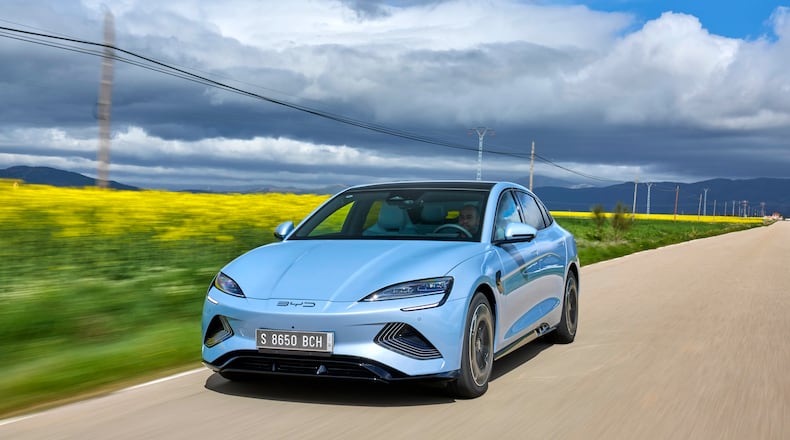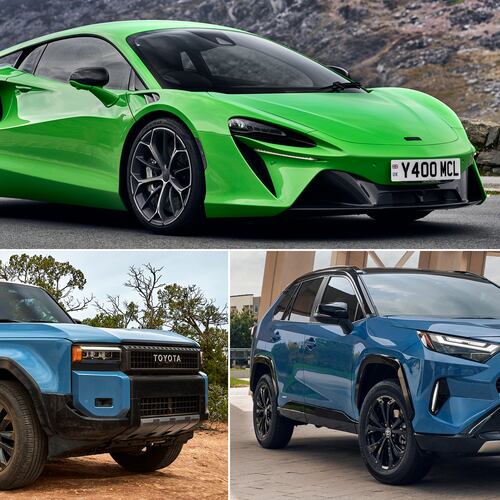In February, a jury of 98 automotive journalists from 30 countries released a list of finalists for the World Car of the Year Award. The list included twice as many cars from Chinese automakers as American brands.
The winner, the Kia EV9, was a South Korean electric SUV. Still, China’s strong performance revealed something the rest of the world knows, and Americans are just beginning to suspect: Chinese companies have become very good at building cars.
No Chinese car brand sells cars in America today (though even that statement has grown an asterisk). However, China is increasingly becoming the center of the global automotive industry. The Chinese buy more cars than any other population, and by some measures, China surpassed Japan to become the world’s largest exporter of vehicles in 2023.
Credit: SPECIAL
Credit: SPECIAL
Chinese cars, particularly electric vehicles, have become a political issue and an object of anxiety for American automakers. Let’s catch up on what Americans need to know about the growing issue of Chinese cars on the global market.
Chinese cars are not here yet*
While no Chinese car brand sells cars in America, some automakers you’re familiar with have deeper ties to China than you might realize.
Chief among these brands is Volvo. While headquartered in Sweden, Volvo builds cars in Europe, the U.S. and in China. Volvo is also part of a Chinese conglomerate, Geely Holding Group.
Ford’s Lincoln luxury brand builds its Nautilus SUV in China, and General Motors builds the Buick Envision there.
So while you rarely see Chinese brands like BYD or Nio on American roads, you have likely passed a car built in China.
They’re inching closer
You caught the “rarely” in that last sentence if you’re paying attention. If you spend time near the U.S.-Mexico border, you may have seen cars like the BYD Seal or Zeekr 001 — electric sedans that are Tesla Model 3 rivals.
Credit: SPECIAL
Credit: SPECIAL
These Chinese cars are common in Mexico and can legally cross the border for short stays. According to the Mexican Ministry of Economy, Chinese automakers outsold American makes in Mexico in 2023.
Several Chinese brands are publicly exploring building factories in Mexico, raising alarm in the U.S. that Mexican factories, in theory, might allow Chinese automakers to export cars under North American trade agreements.
Chinese cars may even appear in Canada soon. BYD hired lobbyists to advise it on moving into the Canadian market last year, though reports say the company may have backed off that plan in light of recent tariff threats.
The cars are high-quality
Chinese products once had a reputation as cheaply made. That reputation is quickly fading in the auto industry.
It’s not just the World Car of the Year Awards; Chinese cars now appeal to consumers worldwide. Analysts from S&P Global Mobility found that 21% of EVs sold in Europe in 2023 came from China.
Of course, low cost is part of the appeal. Still, consumers in places with deep national car cultures are embracing Chinese electric cars.
Chinese automakers now export more cars to Australia than American automakers do. The BYD Seal, a sporty four-door EV that looks a lot like a Tesla Model 3, has even grabbed a small sales foothold in Japan.
J.D. Power researchers recently began applying their initial quality testing criteria to Chinese-built cars. They report that “domestic car brands in China have gradually narrowed the quality gap with international bands over the past three years.”
The big surprise to some: Chinese cars are safe
An automaker desiring to sell vehicles in Europe must pass safety testing from the European New Car Assessment Program. Industry insiders regard Euro NCAP testing as similar to American crash tests, but in some respects it is more stringent than U.S. standards.
Today, automakers often sell the same cars on multiple continents. A vehicle designed to pass Euro NCAP testing is also engineered to pass American testing standards.
They may leapfrog the world in a critical technology
Global automakers are deep into the race to produce the next generation of EV battery technology. Solid-state batteries — called that because the electrolyte that stores energy inside them is solid rather than the gel in today’s lithium-ion cells — promise longer ranges, lighter weights and faster charging and may require fewer rare minerals than today’s batteries.
Stellantis (the parent company of Dodge, Jeep and others) and Nissan could have batteries in testing within two years. China’s Nio uses an early semisolid-state version for sale today, with an advertised range of 1,000 km (621 miles).
Democratic and Republican administrations can try to keep them out
The Biden administration took two crucial steps this year to try to keep Chinese EVs out of the U.S., enacting strict tariffs that would double the price of an EV imported to the U.S. from China and proposing new rules that ban Chinese-derived software from cars here on national security grounds.
President-elect Donald Trump made opposing Chinese EVs a staple of his stump speech, sometimes suggesting a 200% tariff.
This has all happened before
Presidential candidates arguing over the threat of a foreign automaker is not new.
In the 1980 election, incumbent president Jimmy Carter and challenger Ronald Reagan sparred over how to keep Japanese automakers from swamping American industry with low-priced cars. On the stump, Reagan promised quotas to keep their numbers down.
For what it’s worth, Reagan didn’t enact quotas on Japanese cars once he was elected.
To avoid regulation, Japanese automakers voluntarily capped the number of cars they exported to the U.S. for several years. A slow ramp-up of Japanese cars in the U.S. allowed American manufacturers (and consumers) to adjust to the competition gradually. The Japanese industry gave additional help, consenting to exchanges that let American car executives study their manufacturing and supply chain strategies.
Today, millions of Americans happily drive Japanese cars and don’t consider them a threat to the domestic industry.
It’s not a perfect comparison. Americans didn’t view Japan as a rival on the global stage in 1980, the way many see China today. Instead, I offer the situation as an illustration that rhetoric from political stump speeches often gets toned down as it becomes policy.
The U.S. government is likely to try to continue to block Chinese automakers from the domestic market. However, with their growing global dominance, Chinese cars will influence the future vehicles you drive, and you may still see Chinese dealerships on American soil someday.
Sean Tucker reports for Kelley Blue Book from Washington, D.C., where he has covered the auto and energy industries for a quarter-century.
The Steering Column is a weekly consumer auto column from Cox Automotive. Cox Automotive and The Atlanta Journal-Constitution are owned by parent company, Atlanta-based Cox Enterprises.
About the Author
Keep Reading
The Latest
Featured





